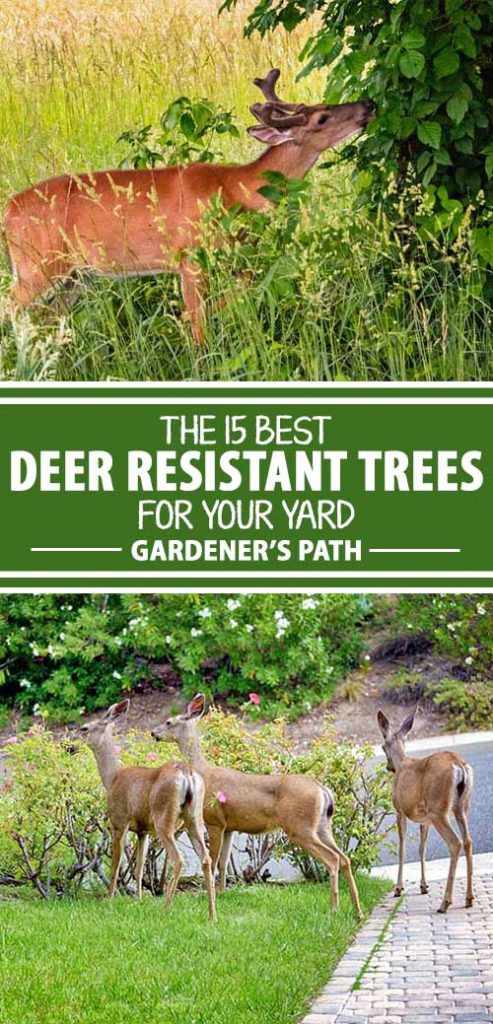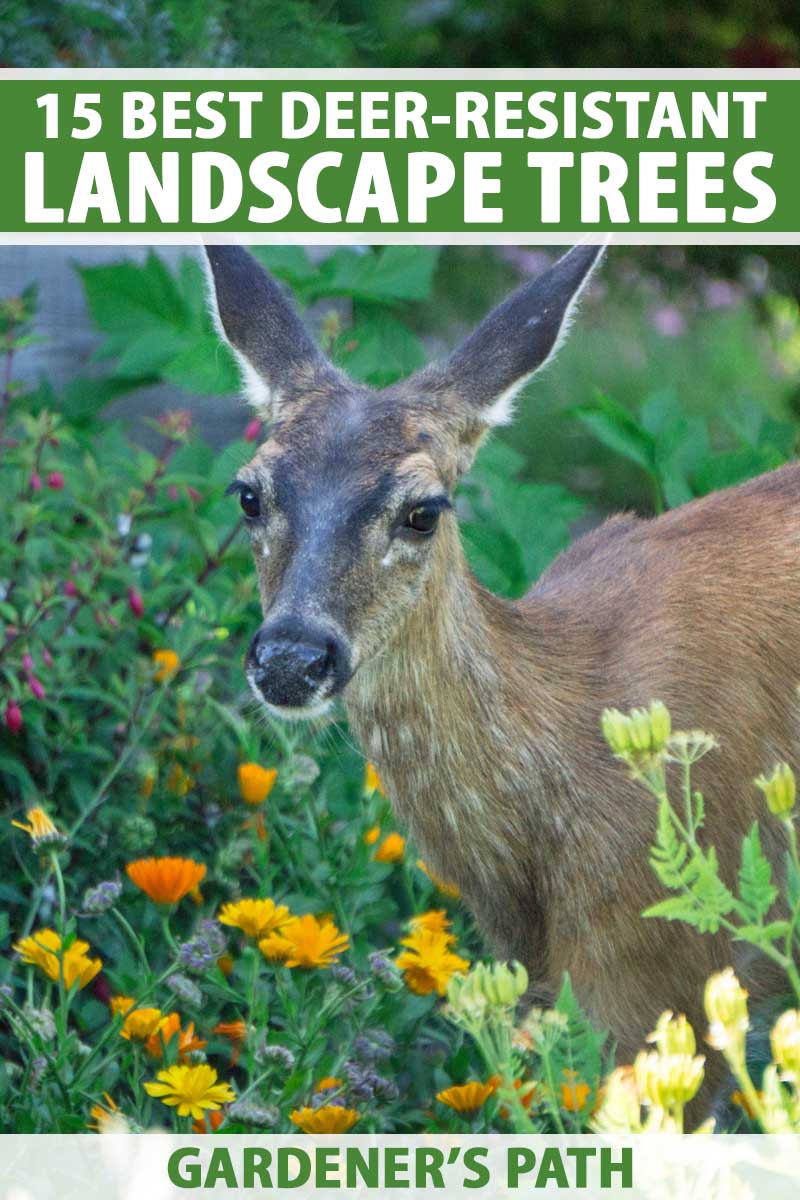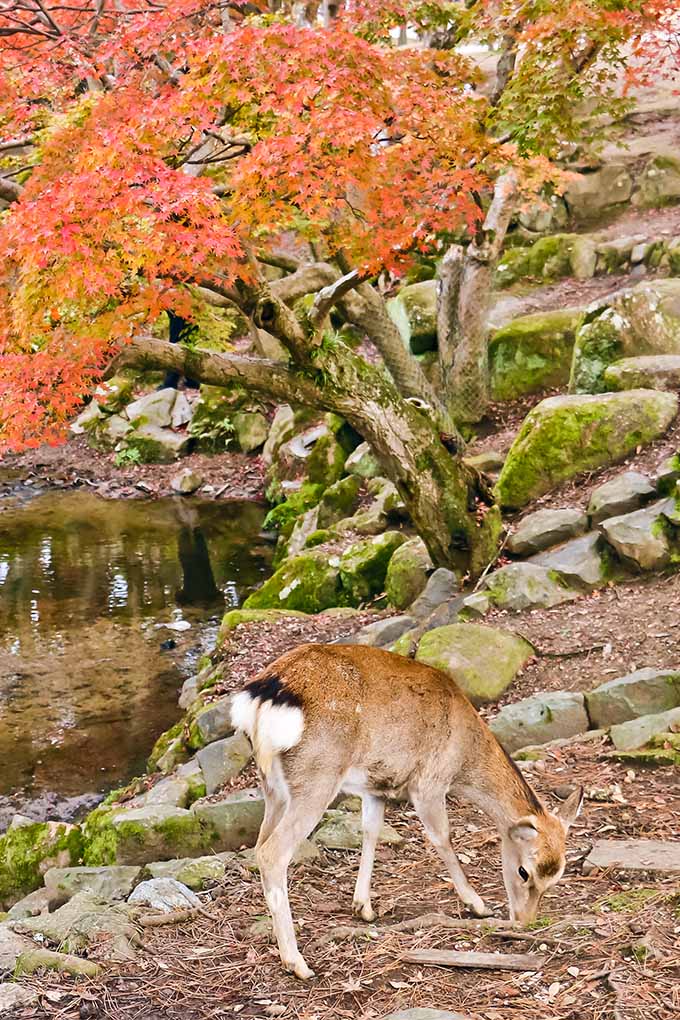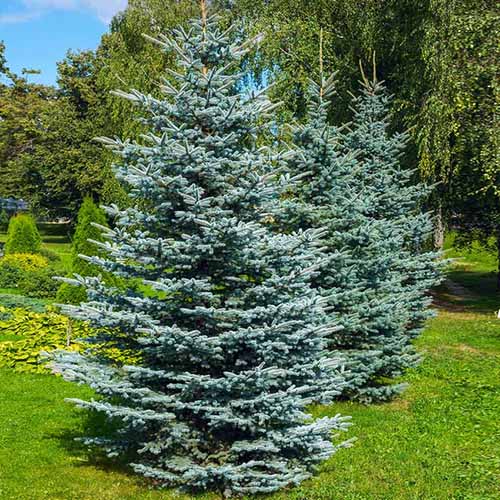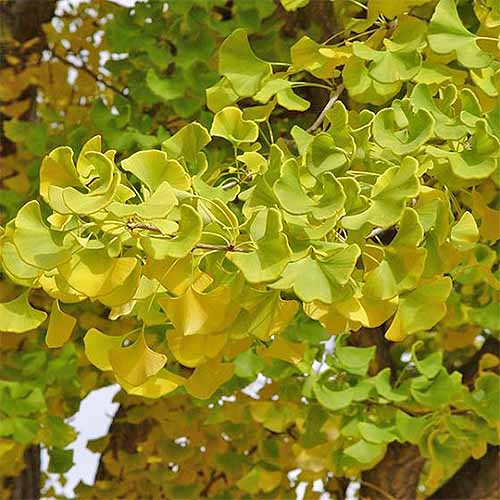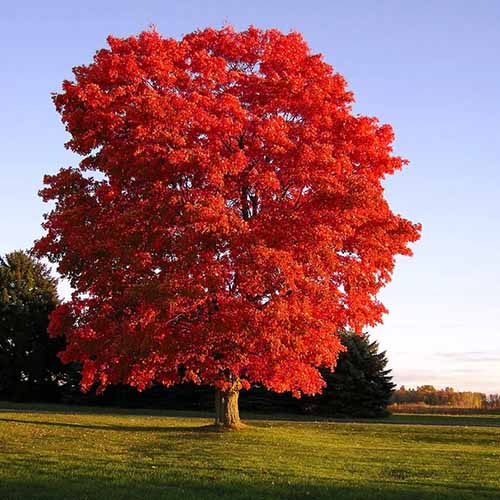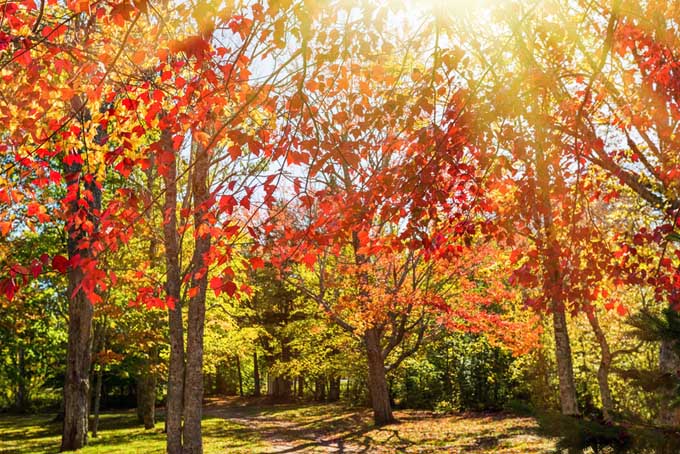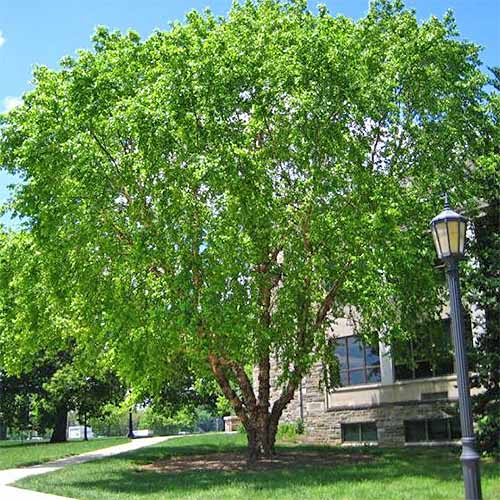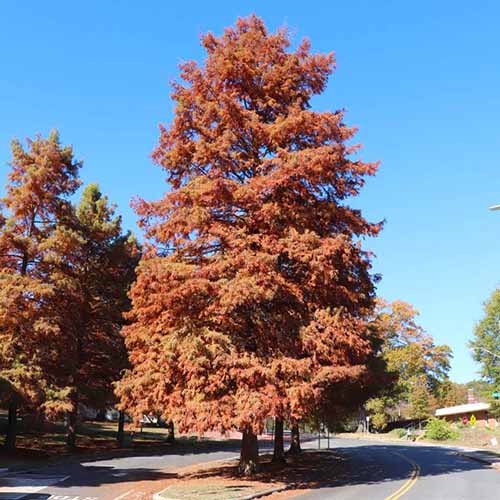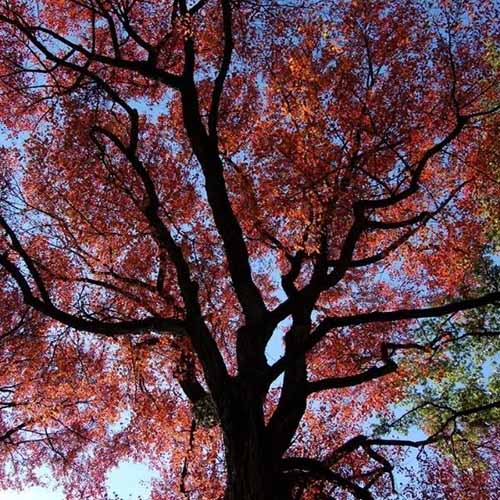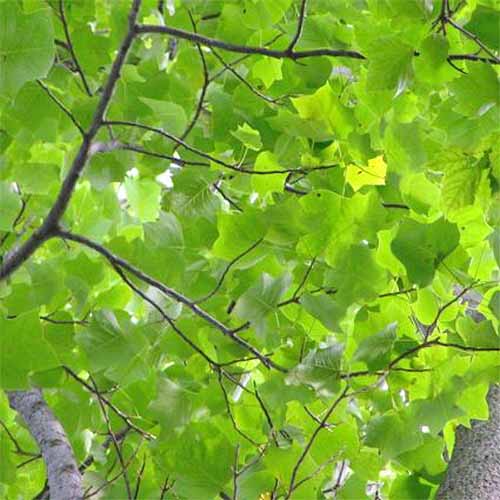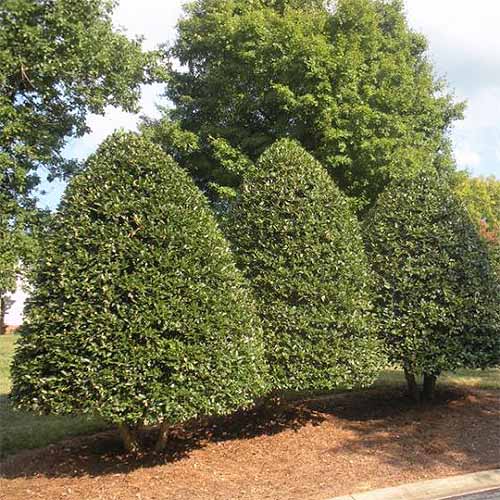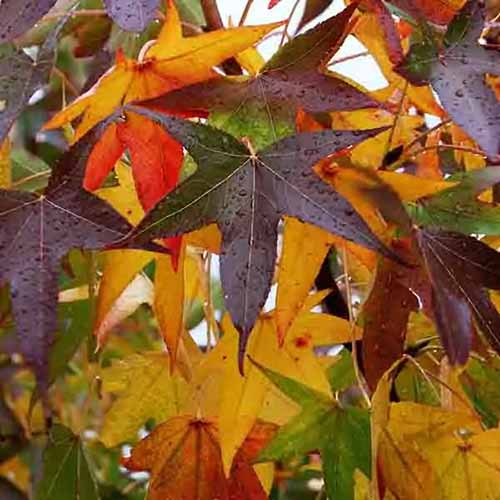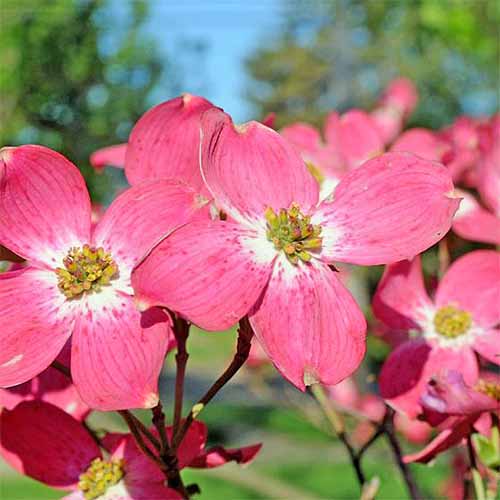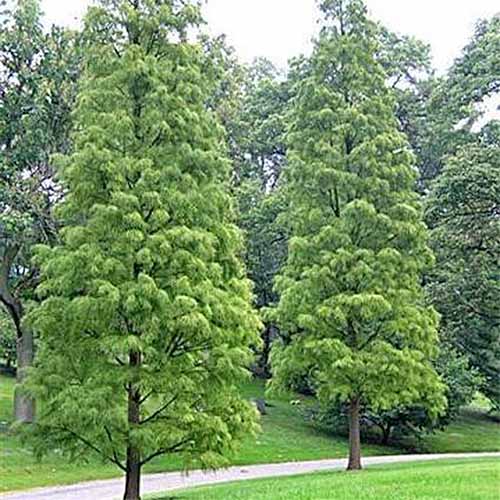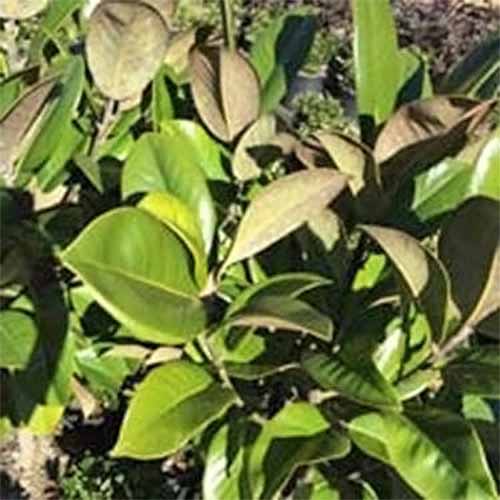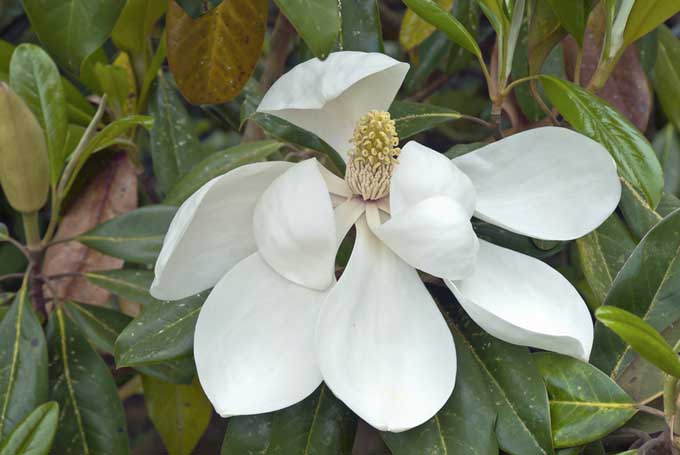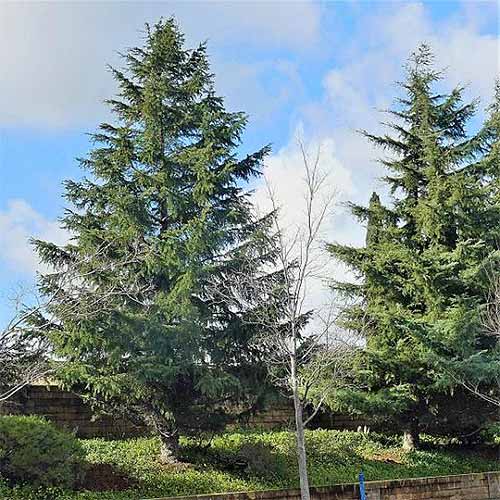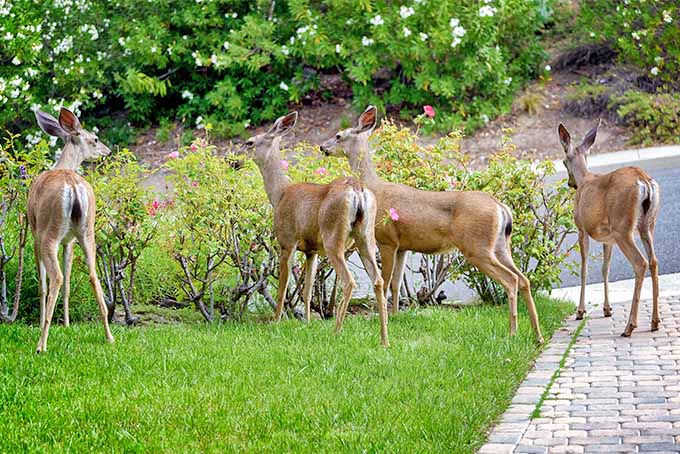As the evening falls, the four-legged rats – ahem, cough, cough – majestic creatures leave their shelters and search for food, and many times your garden or landscape looks like a drive-through fast food joint to them. There are many repellents out there, or home remedies, but many times they don’t work or don’t work well. While there aren’t many truly deer-resistant plants out there, there are a few varieties that they would rather not eat. We link to vendors to help you find relevant products. If you buy from one of our links, we may earn a commission. Having said that, consider protecting any new saplings or transplants with temporary fencing to keep curious nibbling wildlife at bay – better safe than sorry! This isn’t a complete list by any means, but it’s a good start if you are looking for specimen pieces for your landscape, and would rather not see them trampled to death or foraged on mid-season. Deer dislike the taste and feeling of evergreens. It’s a combination of flavor and the sharp, unpleasant sensation of irritating needles on their tongues that keeps them away.
Other times, the pungent scent of certain plants makes deer think twice before chomping down. In general, if a tree or shrub feels or smells unpleasant to us, it’s doubly offensive to deer. So, what’s not on the menu? Time to find the perfect option for your USDA Hardiness Zone. On to the list!
1. White Spruce (Picea Glaucus) – Zones 2-6
My first job as an adult was to plant 2,000 white spruce at a nursery in Pennsylvania. I’ll never forget these stiff-needled trees because of it. I’ve always enjoyed the relatively open and airy habit the white spruce develops as it grows.
White Spruce, available from Nature Hills As long as it’s in a well-drained spot, the white spruce can grow quickly to heights of up to about 45 feet. The needles have an unpleasant aroma when crushed – so don’t crush the needles! The white spruce has a relatively narrow growing range, but it’s an exceptional tree that folks in warmer climates will never be able to grow. So jump on it and grow away if you’re located in the right zone!
2. Colorado Blue Spruce (Picea Pungens) – Zones 2-7
A classic addition to the landscape, the Colorado blue spruce provides beautiful and unique conifer colors, a soft and cool blue. A stately height of up to nearly 80 feet and hardiness to most diseases and pests makes the Colorado blue the tree for you.
1.5-2′ Colorado Blue Spruce for Windbreaks, available from FastGrowingTrees.com Unlike many other spruces, the Colorado blue is tolerant of wind. It is somewhat resistant to drought and periods of prolonged moisture, but is less hardy than other members of the Picea genus. You can occasionally find grafted Colorado blues at nurseries if you want a squat and unique conifer shape in your garden. It can do well in a variety of soil types, just be sure to plant it in a sunny location.
3. Ginkgo (Ginkgo Biloba) – Zones 3-9
A favorite of mine from a point of fascination, the ginkgo is a spectacular grower in the right setting. These trees are incredibly tolerant of pollution and grow just plain cool looking leaves unlike what you’ll see on any other tree out there.
4-5 Feet Bareroot Ginkgo, available from Nature Hills In the fall, the leaves turn to a golden-yellow and litter the ground with carpets of gold. These can be planted in almost any condition and thrive. They are even tolerant of road salt, and line at least a few city streets in Philadelphia. Just make sure you only purchase male trees; the females produce a foul-smelling fruit that would make you rue the day you planted them. They prefer full sun and grow to a height of about 60 feet. Sandy soil is best, and wherever you plant, it must be well-draining. There’s a tremendous amount of interest in these trees and they’re guaranteed to be a conversation starter in your yard.
4. Red Maple (Acer Rubrum) – Zones 3-9
The red maple is a beautiful ornamental deciduous tree. It grows to be 30 to 90 feet tall at maturity, and up to 40 feet in diameter.
5-6′ Red Maple, available from FastGrowingTrees.com Flowering from March to May, it also has wonderful red spring and fall color. This tree takes best to full sun, but will tolerate partial shade. Just be sure to plant true red cultivars such as ‘Autumn Blaze’ or Red Sunset™ if red autumn leaves are what you’re after – some varieties will actually turn yellow come September or October. Red maple prefers a moist, acidic soil that is well draining, and it will grow in various types of soil including sand and clay.
Commonly used for pulpwood by the saw timber industry, ink and various dyes were once made from the bark as well. Care should be taken when mowing and removing weeds around the red maple, as it has thin bark that is susceptible to damage from the blades. Find tips on growing red maples here.
5. River Birch (Betla Nigra) – Zones 3-9
With its paper-like bark, the river birch will grow up to 100 feet tall. It is resilient to flood damage, grows well in moist to wet locations, and is good in tough clay soils.
Multi-Trunk, 4-5′, and 5-6′ River Birch in #3 Containers, available from Nature Hills Acidic soil is preferable over something that is neutral or more alkaline. Intolerant to shade, remember to give this one a sunny location. This is a beautiful tree specimen in the yard with its unique paper bark. Game birds also love the birch’s seeds.
6. Dawn Redwood (Metasequoia) – Zones 4-8
A fast growing deciduous conifer (you read that right!), the dawn redwood is the ideal choice if you’ve got room for it.
5-6′ Dawn Redwood, available from FastGrowingTrees.com While it enjoys moist and rich soils, it does not enjoy standing water as much as its cypress cousins. The dawn redwood is a stupendous choice for any placement that has room for a 100-foot-tall tree with gorgeous bark, and the best shade of green this side of an emerald.
7. Black Tupelo (Nyssa Sylvatica) – Zones 4-9
Ah, ol’ Tupelo. That great Van Morrison song “Tupelo Honey” always jams through my head when I admire the fall color of the blackgum… Black tupelo can grow in most soils that aren’t heavy and dense, such as those largely consisting of clay.
2-3′ Black Tupelo, available from Nature Hills Nursery I love trees that offer up surprises, and the black gum’s seemingly random growth rate is exactly the kind of surprise I like. It will eventually reach a height up to about 50 feet, but its growth rate ranges from less than a foot to more than 24 inches a year. This autumn-time head turner will nab your attention as the summer cools off, but its scale-like bark provides year-round interest to the discerning gardener.
8. Tulip Poplar (Liriodendron Tulipifera) – Zones 4-9
The tulip poplar is a fast-growing shade tree that deer tend to ignore. Consider planting one of these beauties if you’ve got the room for it to really show off. Capable of reaching heights of 100 feet and more, tulip poplars grow at a potential rate of two feet or more a year.
5-6′ Bareroot or #3 Container Tulip Poplar, available from Nature Hills They provide shade and cover, but are prone to dropping small limbs and branches. They can tolerate a variety of soil types but are not so good with pollution. An interesting leaf shape is accompanied by prolific flowering in the spring. You can also check out more of our favorite fast growing trees to create shade in this article.
9. American Holly (Ilex Opaca) – Zones 5-9
The American holly can reach heights up to 70 feet, and its prickly leaves are an awesome deer deterrent. These trees prefer acidic soils and grow at a moderate rate, 12 inches a year at most.
American Holly, available from Nature Hills Nursery Holly prefers soils with good drainage, so plopping it into a wet spot is a no-no. Birds and other wildlife love the berries, though deer find every bit of this plant unpleasant. For the enterprising gardener with a love for homemade Christmas arrangements, the fruiting berries of a holly can serve as excellent material for a homemade design. Find more information about growing American holly here.
10. American Persimmon (Diospyros Virginiana) – Zones 5-9
Wait a minute, a deer-resistant tree that also provides fruit? What is this, witchcraft?!
3-4′ American Persimmon Trees, available from FastGrowingTrees.com No, it’s just the persimmon. I’m not a fan of the small, astringent fruit, but plenty of folks enjoy the taste and it’s great for making jelly once it ripens fully and sweetens up. Better yet, it’s an attractive option that offers food and shelter for more desirable wildlife. Keep in mind that you’ll probably need both a female and a male tree planted in close proximity in order to pollinate the flowers and set fruit. Plus, though it prefers moist, sandy soil, it will grow in just about anything, and is tolerant of drought as well. Even if you don’t want the fruit, this is a beautiful tree worthy of the coveted “ornamental” status while still producing edible fruit. Expect it to reach heights of up to 50 feet. Read more about growing American persimmons here.
11. American Sweetgum (Liquidambar Styracifula) – Zones 5-9
American sweetgum grows to be 50 to 150 feet tall and is a good long-lived addition to most any garden. The leaves are star-shaped with five lobes.
American Sweetgum in #3 Containers, available from Nature Hills Nursery This tree is shade intolerant and can survive in most any soil. Flowers bloom from March to May and fruits mature from September to November. For fall foliage, its show of red and yellow is breathtaking. Sweetgum wood is often used for lumber and plywood, though it can crack easily.
Also known as American storax, hazel pine, or alligatorwood (among other names), sap from this tree and its Asian relatives was sometimes used in ancient medicines. The resin that weeps from cuts made in the bark is also referred to as “liquid amber” or “copalm balsam,” and it has a pleasant smell.
12. Flowering Dogwood (Cornus Florida) – Zones 5-9
The flowering dogwood is a gorgeous native tree known for its showy display of pink or white blooms in April and May, small red fruits, and leaves that turn shades of scarlet in the fall. It maxes out at heights of 20 to 40 feet with a short trunk and branching crown.
Cornus Florida ‘Cherokee Chief’ Red Flowering Dogwood, available from Nature Hills Dogwoods enjoy full sun but they can also do well in partial shade, and they’ll offer the added bonus of attracting birds and pollinators like butterflies to your yard. Tolerant of clay soils, this tree is also notable for its resistance to black walnut juglone toxicity.
13. Pond Cypress (Taxodium Ascendens) – Zones 5-11
Another fast-growing tree, the pond cypress offers a vibrant green foliage that changes to a copper color in the fall, and a pleasing narrow pyramid shape. Reaching 45 to 60 feet at maturity with a spread of 15 to 20 feet, it grows naturally along the edge of small bodies of water or in boggy locations and swamps.
Pond Cypress #1 Container, available from Nature Hills Nursery As its name suggests, it does well in wet areas of the landscape, though it can adjust to drier areas as well. Full sun or partial shade is recommended, and pond cypress will thrive in a variety of soil types. Any dead limbs should of course be removed, but they generally require no pruning.
14. Southern Magnolia (Magnolia Grandiflora) – Zones 7-9
One of the best known trees in the south, the southern magnolia is a fast growing evergreen that will mature at around 60-90 feet.
Magnolia Grandiflora ‘Green Giant,’ available from Nature Hills It has large saucer-like white flowers that are classically fragrant. Blooms appear from April to June. Magnolias grow best in rich moist soils and will tolerate some shade. Plant this for a showy, classic addition to your garden.
Letting the leaves fall without raking provides natural ground mulch for the tree.
15. Deodar Cedar (Cedrus Deodara) – Zones 7-11
My travels in the Southwest allowed me to encounter and interact with the deodar cedar. A true cedar, these are also naturally resistant to insects.
Deodar Cedar, available from Nature Hills It will reach heights of about 50 feet and develops a conical shape. They have a similar habit as the white spruce mentioned above, so if you live in the warmer regions of the United States, you can show off your deodar cedar while us northern folk are tending our white spruce. It isn’t a fast growing tree, but wildlife loves it and will treat you with regular visits while it fills out and shapes up. Deodar cedars prefer moist soil that is well draining, and they have good drought tolerance.
That’s All For Now – So Get Growing!
We’ve got a nice assortment of deer-resistant trees here for you to consider in your yard. Ready to make your selections? If you’re looking for deer-resistant flowers, try perennials like the iris and calamint, or plant marigolds (one of my favorites) as a sunny annual.
And if you need more tips on fending off deer and their relatives, be sure to check out some of our other guides:
How to Keep Moose Out of Your Garden and Orchard Get Them Deer Out of Here with These Tips DIY Guide: How to Install a Deer Fence to Keep Wildlife Out of the Garden
